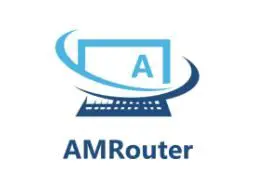Introduction
WiFi allows us to access the Internet from virtually anywhere, as long as its signals reach our device. While this is a fantastic feature, there is a drawback: most WiFi routers can only cast their signals a few feet away, limiting our Internet access. Fortunately, technology has advanced far enough to find a solution to this problem. So, if you want to have continuous access to efficient and reliable WiFi, all you have to do is buy a long range WiFi extender, and you’re good to go!
The greater the extension distance to be covered, the more expensive WiFi router technology becomes, as well as the more difficult it is to configure and install. WiFi repeaters can help as a solution. They are the most basic and inexpensive way to expand the coverage of your WiFi network.
As the name implies, these devices are in charge of “picking up” your router’s WiFi coverage and amplifying it so that it reaches a little further.
What is a Long Range WiFi Extender?
A long-range WiFi extender is a device used to amplify the existing wireless signal from a router or other wireless access point. It receives the wireless signal and then amplifies it before transmitting it to areas of the home or office where the signal is weak or non-existent. This can help to increase the overall coverage area of a wireless network and improve the performance of devices that are connected to it.
Best Long Range WiFi Extender 2023
There are several long-range WiFi extenders on the market that are considered to be among the best, but the specific one that is best for you will depend on your individual needs and preferences. Some popular options that are highly rated by experts and users include:
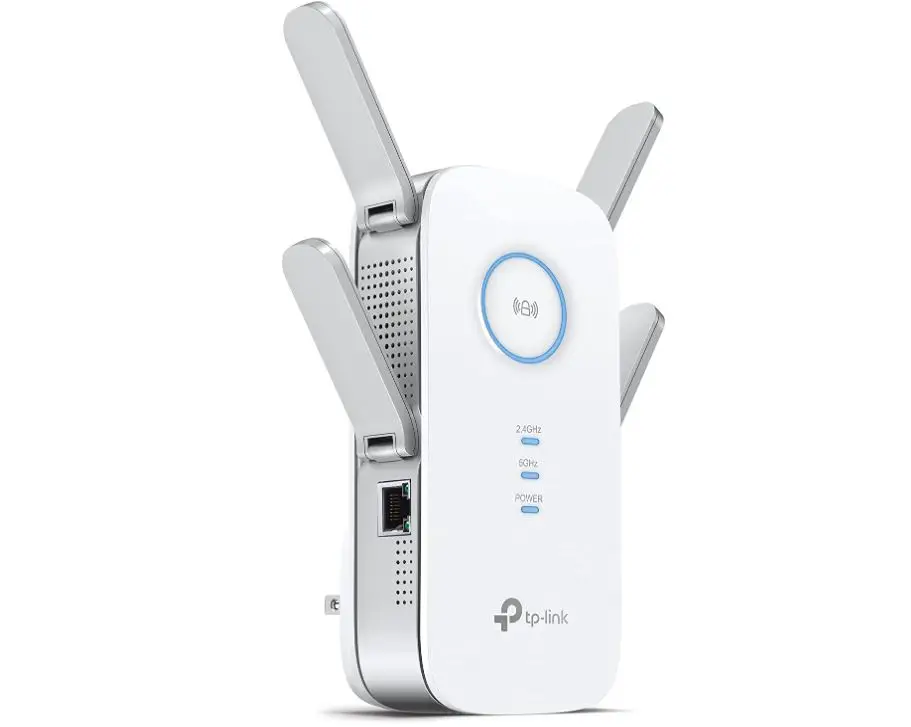
TP-Link AC2600 Long Range WiFi Extender(RE650)
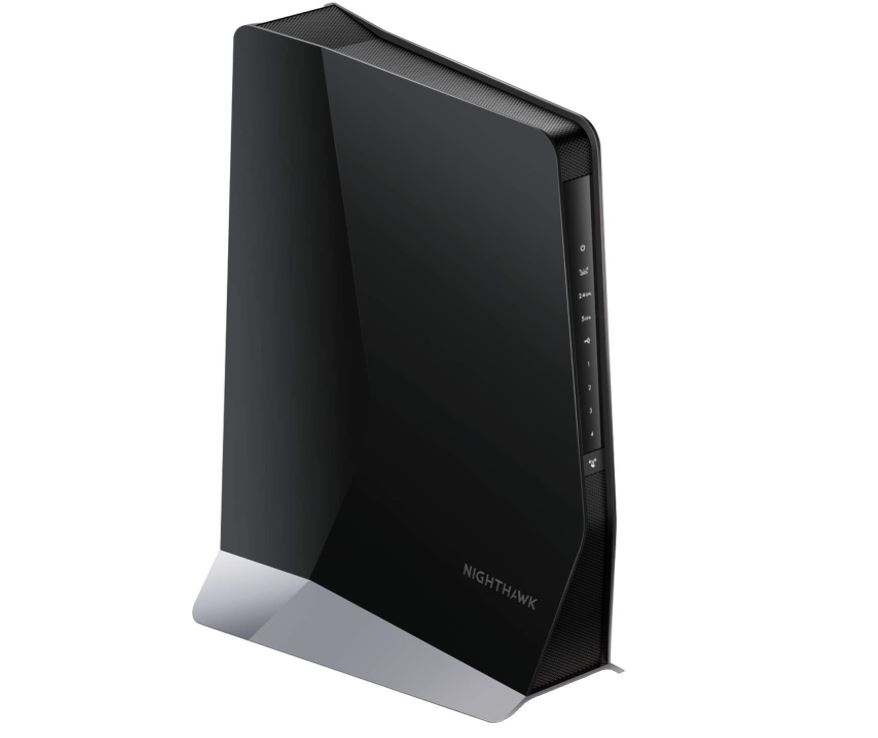
NETGEAR Nighthawk WiFi 6 Mesh Range Extender EAX80
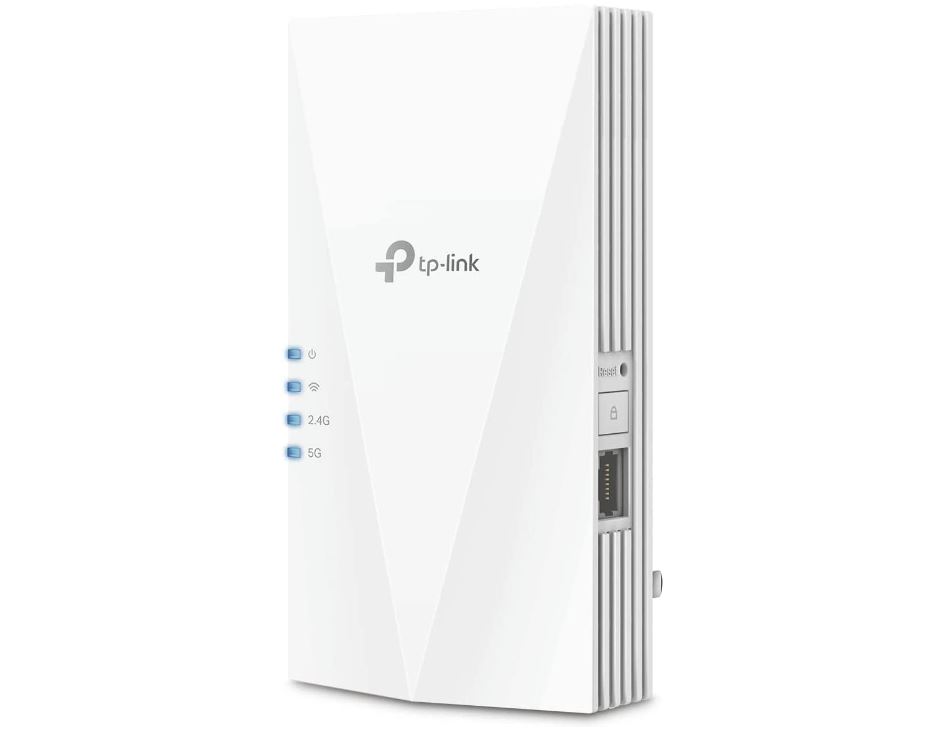
TP-Link AX1500 WiFi Extender Internet Booster(RE500X)
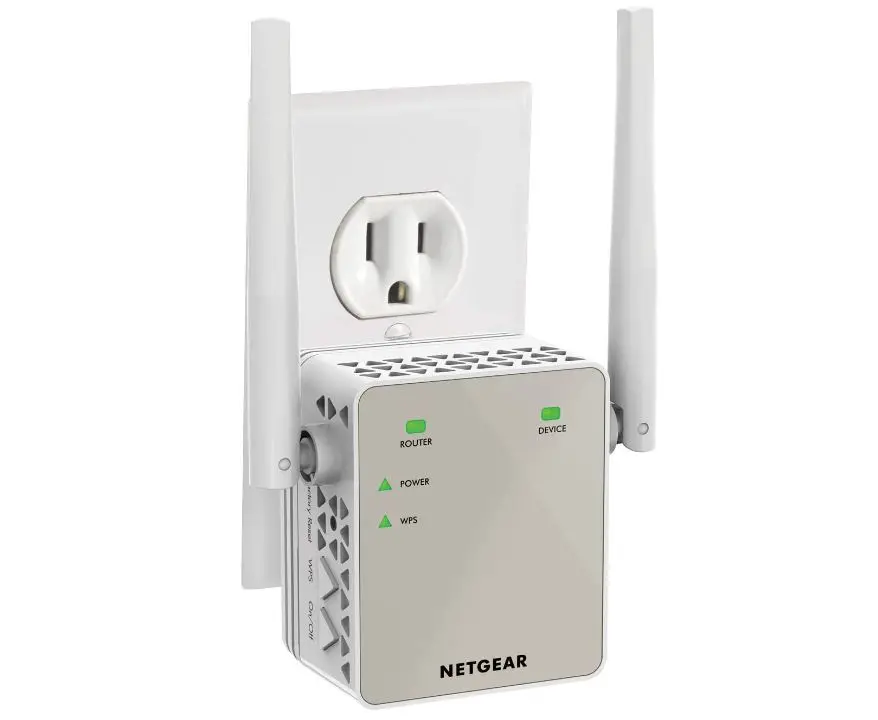
NETGEAR Wi-Fi Range Extender EX6120

The TP-Link RE650 is a high-performance WiFi range extender that is designed to increase the coverage area of a wireless network by up to 14,000 sq. ft. It uses advanced beamforming technology to focus the wireless signal toward connected devices, which helps to reduce interference and improve signal strength.
Some of the key features of the RE650 include:
1- Dual-band AC2600 wireless speeds (up to 800Mbps on 2.4GHz and 1733Mbps on 5GHz)
2- Four high-performance external antennas for improved coverage and stability
3- Gigabit Ethernet port for connecting wired devices
4- Intelligent signal light helps to find the best location for optimal coverage
5- Easily expand your network with the press of a button using the WPS button
It can be easily set up with the tp-link tether app and also has a built-in web interface for advanced settings and management.
The RE650 is a great option for large homes or offices with multiple floors, or for those who want to extend the coverage of an existing wireless network. It’s compatible with any standard wireless router and can help to eliminate dead spots and improve the performance of connected devices.

The NETGEAR Nighthawk WiFi 6 Mesh Range Extender EAX80 is a high-performance WiFi range extender that is designed to expand the coverage area of a wireless network and eliminate dead spots. It is built on the latest WiFi 6 technology and can deliver fast and stable wireless signals to connected devices, even in large homes or multi-story buildings.
The main features of this extender are:
WiFi 6 technology: Provides faster speeds, better capacity, and reduced network congestion.
Tri-Band Mesh: Delivers fast and stable wireless signals to connected devices.
4 high-performance antennas: Provides wide coverage and eliminates dead spots.
Gigabit Ethernet Port: Connects wired devices for high-speed internet access.
Easy setup and management: Can be easily setup with the Nighthawk app and managed with the NETGEAR Nighthawk app.
Smart Roaming: Automatically connects your mobile devices to the best available WiFi as you move around your house.
Intelligent Network Management: The extender optimizes the performance of your network and devices to ensure a smooth and stable connection.
This extender is a powerful and versatile solution for expanding the coverage area of a wireless network and eliminating dead spots. With its advanced features and easy setup, it can be a good fit for users with large homes or multi-story buildings who want to improve their WiFi performance.

The TP-Link AX1500 WiFi Extender Internet Booster (RE500X) is built on the latest WiFi 6 technology, which means it can deliver fast and stable wireless signals to connected devices. It has 2 internal antennas that provide wide coverage and eliminate dead spots.
It also has a 1 Gigabit Ethernet port that allows users to connect wired devices like gaming consoles, smart TVs, and more. The extender also has MU-MIMO technology, which allows multiple devices to connect to the extender at the same time without any reduction in performance. Additionally, it has a Smart Roaming feature that automatically connects your mobile devices to the best available WiFi as you move around your house.
This product is more budget-friendly than others, while still providing good connectivity and speed. However, its coverage range is limited to 1500 sq ft, and its speed is limited to 1.5 Gbps, so it may not be the best fit for larger homes or multi-story buildings.
It is a good fit for smaller homes or apartments that want to improve their WiFi performance without breaking the bank.

The NETGEAR Wi-Fi Range Extender EX6120 is a wireless range extender that can be used to improve the coverage of an existing wireless network. Some of the main features and specifications of the EX6120 include:
Dual-band: The extender supports both 2.4GHz and 5GHz bands, providing a wider range of options for connecting devices.
Easy setup: The extender can be set up easily using the NETGEAR Nighthawk app, which guides users through the process step-by-step.
Gigabit Ethernet ports: The extender has two Gigabit Ethernet ports, which can be used to connect wired devices such as gaming consoles, smart TVs, and more.
FastLane technology: The EX6120 features FastLane technology which makes it easy to create a high-speed WiFi connection for gaming, streaming, or other high-bandwidth activities.
Beamforming technology: The extender uses beamforming technology to focus the wireless signal toward connected devices, providing a stronger and more stable connection.
Compact design: The EX6120 has a compact design that makes it easy to place it anywhere in your home without taking up too much space.
Smart Roaming: The extender has a Smart Roaming feature that automatically connects your mobile devices to the best available WiFi as you move around your house.
Extenders vs. Mesh Systems
A WiFi extender and a mesh system are both designed to extend the coverage area of a wireless network, but they work in slightly different ways.
A WiFi extender, also known as a wireless range extender or WiFi booster, is a device that connects to an existing wireless network and amplifies the signal to extend the coverage area. The extender connects to the existing wireless network and establishes a link with the router or access point, receives the wireless signal and amplifies it, and then re-broadcasts it to areas of the home or office where the original signal may be weak or non-existent.
On the other hand, a mesh system is a network of multiple wireless devices that work together to extend the coverage area of a wireless network. Mesh systems consist of multiple devices, called nodes, that communicate with each other to create a single wireless network. The nodes work together to create a mesh network that provides seamless wireless coverage throughout the home or office. Each node can act as a wireless access point, and the wireless devices can move freely between the nodes without losing their connection.
Both WiFi extenders and mesh systems can help to eliminate dead zones and improve the overall performance and coverage of a wireless network, but mesh systems offer a more seamless and stable coverage as the devices in the mesh network communicate with each other to create a single network. Mesh systems also usually have a more user-friendly setup process and offer more advanced features such as parental controls, bandwidth prioritization, and more. However, mesh systems are generally more expensive than extenders.
In summary, both WiFi extenders and mesh systems can help to extend the coverage area of a wireless network, but mesh systems offer a more seamless and stable coverage, while WiFi extenders are generally more affordable.
Buyer’s Guide
When purchasing a new Internet extender, make sure to buy from a reputable manufacturer. Fortunately, all of the devices mentioned in this list are manufactured by some of the most reputable companies in the long-range WiFi extender market, so you won’t have to worry about purchasing the wrong product.
Despite the fact that all of the devices listed above are excellent in their own right, I’d recommend reading the buyer’s guide below to help you determine which of these best WiFi extender products is best for you.
You should have an idea of your device requirements before looking into different WiFi long-range extender options. So, if you need a device that can easily provide signals spanning two adjacent office buildings, I’d recommend getting a WiFi extender with a range of at least 5 miles. In this case, a 1-mile or 3-mile extender range may be insufficient, whereas an 8-mile range would be excessive.
The buyer’s guide below will assist you in determining the best long-range WiFi extender for your needs.
Compatibility with Your WiFi Network
It is critical that your wireless extender is network-compatible. It will not work otherwise!
Check your router’s settings option and go over the range of supported speeds (in Mbps) that it offers to determine whether or not the extender is compatible with your network. You should also look at its WiFi standard category to see if it matches the standards supported by your extender.
You can also buy a router extender, which has extra features like multiple Ethernet ports and can thus serve as a hub for connecting your smart TV, consoles, and other devices. Some models also include audio functionality (for listening to music or podcasts! ), touch screens, and other features.
Support Of The MU-MIMO Standard
The MU-MIMO standard validates the technology of multiuser, multiple-input, and multiple-output. This technology enables the WiFi range extender to communicate with multiple wireless devices, including your computer and smartphone, at the same time.
Choosing a WiFi range extender that supports the MU-MIMO standard is extremely beneficial because it increases signal speed tenfold and allows you to connect multiple devices to the same network at the same time.
Safety and Security
A WiFi booster that meets security standards (for example, the WPA2-PSK [AES] standards) can help protect your WiFi network from third-party hackers. I strongly advise you to buy a device only if these security standards are met, especially if you live in a crowded town or city with a lot of Internet traffic.
Design
The most common WiFi repeater design is a small plastic block that connects directly to a socket. They usually have a pair of LED lights as well, so we can easily assess the signal strength. These devices may also have one or more antennas.
More complex WiFi repeaters are more expensive and have more ports and options. They have a similar appearance to modern routers.
Functions
There is no point in purchasing a long-range WiFi antenna that does not meet your requirements. As a result, you should check the extender’s range and coverage area to see if it is compatible with your network.
Make a list of all your feature and function requirements and ensure that the option you’ve chosen meets them all.
Budget
When it comes to purchasing almost anything, a budget is essential. Would everyone want to buy the most expensive option if it weren’t for the budget?
However, before deciding on a budget, make a list of the features you require. If a feature you desperately need isn’t available within your budget, there’s no point in buying it, right?
Remember that purchasing the most expensive product does not always imply that it is the best fit for your needs. Return to the list above and you will find a corresponding price range. A WiFi antenna extender for less than $30 may still provide you with all of the options you require, eliminating the need to purchase a more expensive device.
Finally, warranties vary depending on the manufacturer and model. However, warranties of up to three years are available.
My advice is to make sure the product has all of the features you require before deciding on a budget. If the product you’ve chosen lacks all of the features you want, consider increasing your budget.
Value for Money
There will be times when you come across multiple long-range WiFi boosters that have all of the functions you require. However, prices will vary depending on a variety of factors such as brand and quality. In this case, it’s best to go over each feature and make sure you’re not overpaying for something you won’t use.
Brand, Customer Support, and Warranty
It is critical to purchase a long-distance WiFi range extender from a reputable brand. This not only ensures a high-quality build but also provides much better customer support.
You should also ensure that the device comes with a reasonable warranty.
It is extremely useful in the event that a product fails due to manufacturing flaws. Repairs are also generally free during the warranty period (depending on the terms of service).
Individual Product Reviews
You don’t have to read individual reviews for each long-distance WiFi extender booster on this list. Instead, it is best to simply select 2-3 options that meet all of your technical requirements. When you’re ready, go to YouTube or Amazon and read through customer video reviews to ensure that existing buyers are pleased with the product and aren’t complaining about its performance.
Size of the Area to Be Covered
Before purchasing a wireless extender, try to estimate the size of the area that will be covered by the device. This will help you decide which device to purchase.
Remember, you’re purchasing a long-range WiFi extender to allow Internet access in those hard-to-reach areas of your home. So, if the device will not cover that area, there is no point in purchasing it. To avoid problems, it is also a good idea to calculate the area in meters that will be covered by the long-distance WiFi range extender.
Device Configuration
Thanks to the WPS standard, long-distance WiFi extenders have recently become significantly easier to set up. Check that the device you’re purchasing is compliant with this standard to avoid activation issues during the device configuration process.
FAQs
What is a long-range WiFi extender?
A long-range WiFi extender is a device that connects to an existing wireless network and amplifies the signal to extend the coverage area. This allows the wireless signal to reach areas of a home or office where the original signal may be weak or non-existent.
How do I set up a long-range WiFi extender?
The setup process for a long-range WiFi extender will vary depending on the specific model you have. However, most extenders can be set up using a web browser or mobile app. The setup process typically involves connecting the extender to a power source and then connecting it to the existing wireless network.
Where should I place a long-range WiFi extender?
To get the best results from a long-range WiFi extender, it’s important to place it in a central location in your home or office. This will ensure that the extender can receive a strong signal from the router or access point and then re-broadcast it to the areas of your home or office where the signal is weak.
Can I use more than one long-range WiFi extender?
Yes, you can use more than one long-range WiFi extender to extend the coverage area of your wireless network. However, it’s important to ensure that the extenders are configured correctly and placed in the right locations to avoid interference and ensure optimal coverage.
Will a long-range WiFi extender improve my internet speed?
A long-range WiFi extender can help to improve the coverage area of your wireless network, but it will not necessarily improve your internet speed. The internet speed you receive is determined by your internet service provider and the speed of your router or modem.
How can I troubleshoot my long-range WiFi extender if it’s not working?
If your long-range WiFi extender is not working, some common troubleshooting steps include: checking that the extender is properly connected to power and the existing wireless network, checking that the extender is placed in a central location, and checking for any interference from other electronic devices. If you continue to have issues, you should refer to the manufacturer’s website or user manual for further troubleshooting steps.
How Does a Long-Range WiFi Extender Work?
A long-range WiFi extender, also known as a wireless range extender or WiFi booster, is a device that helps to extend the coverage area of a wireless network. It works by receiving the existing wireless signal from a router or access point, amplifying it, and then re-broadcasting it to areas of the home or office where the original signal may be weak or non-existent.
Here’s a general overview of how a long-range WiFi extender works:
- The extender connects to the existing wireless network and establishes a link with the router or access point.
- The extender receives the wireless signal from the router and amplifies it using built-in antennas and amplifiers.
- The amplified signal is then broadcasted by the extender’s built-in antennas to areas of the home or office where the original signal may be weak or non-existent.
- Devices such as laptops, smartphones, and tablets can connect to the extended wireless signal, allowing them to access the internet and other network resources.
- Some models of extenders can also act as a wireless bridge and connect wired devices such as gaming consoles and smart TVs to the wireless network.
By extending the wireless signal, a long-range WiFi extender can help to eliminate dead zones and improve the overall performance and coverage of a wireless network. It is important to note that some extenders may require additional setup steps, such as logging into the extender’s web interface to configure the network settings.
Conclusion
When selecting a long-range WiFi extender, I strongly advise you to consider the area covered by the antenna, the device’s compatibility with your current network, and whether the device will provide the expected speed.
Sorting through all of this can be overwhelming if you’re a first-time buyer. As someone who is all too familiar with the stress that comes with selecting the right product, I thought it would be best to compile a list of some of the best long-range WiFi extenders. These will assist you in ensuring that you do not make a mistake when purchasing a product.
To buy a good WiFi extender, you must first understand how they work and what features distinguish one model from another. Also, keep in mind that your choice may change depending on your needs. So, if you want to buy an outdoor long-range WiFi extender, make sure to get one with a large extension range, or you’ll be stuck with a product that doesn’t meet your needs.
As a result, you must choose a long-range WiFi extender that meets all of your needs and covers the distance that you prefer.
